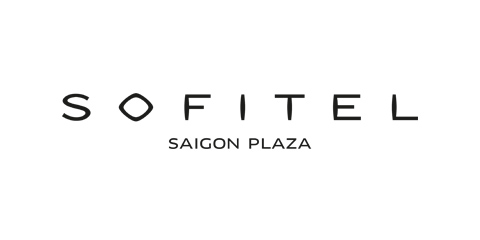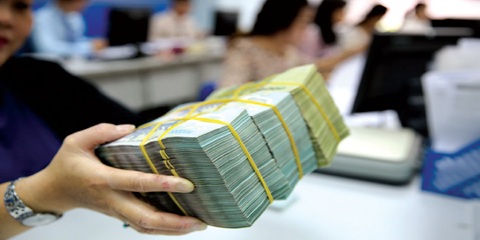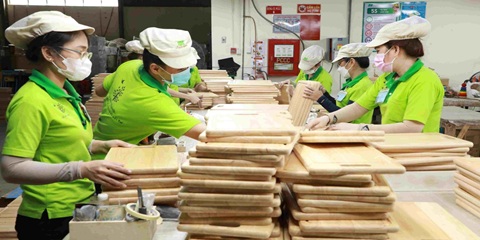Want to be in the loop?
subscribe to
our notification
Business News
BANKS HIKE INTEREST RATES OF HOME LOANS
Most of the local banks have further tightened credit for the real estate sector by raising the annual interest rates for home loans by one to two percentage points compared with earlier this year, leading the sector to slow down, reported Sai Gon Giai Phong newspaper.
Vietnam Export Import Bank’s current interest rate for home buyers is 11%, up by one percentage point. Meanwhile, the rates are 11.5-12% at Orient Commercial Bank, Saigon-Hanoi Commercial Bank and VietCapital Bank, and 12.5% at Saigon Thuong Tin Commercial Bank and Viet A Commercial Bank.
In addition, banks have carefully assessed real estate projects before providing loans, which are equivalent to 30-50% of the property project values instead of the earlier 70-80%.
In HCMC, many banks have provided loans only for projects with investment certificates, while others have stopped lending to those who wish to buy land in the city.
As a result, banks’ tightening policy over property loans has hindered the business of small investors. Hung Anh, a resident of Binh Thanh District, said he had borrowed VND1 billion from a bank last year to buy a plot of land worth VND1.5 billion. However, the bank later agreed to lend him only VND700 million with an interest rate of nearly 12%, as opposed to the earlier offer of 9.5%, causing him to halt his purchase decision.
Similarly, Minh Hang, a resident of District 3, took advantage of the preferential lending rates last year and invested in an apartment project in District 9. But she stopped investing in the project in the second phase as she was no longer offered low rates.
According to a representative of the Khang Thinh Real Estate Group, many investors have shown interest in land lots in the outlying districts 2, 9, Binh Chanh and Nha Be. However, the market has cooled down as banks have set stricter requirements for home loans.
Moreover, banks have stopped offering preferential home loan packages for homebuyers, affecting property investors, especially those who buy apartments. These customers are unable to afford apartments because of the banks’ higher lending rates and difficulties in accessing credit sources, leading to the slow sale of apartments.
Earlier this year, State Bank of Vietnam (SBV) had set the credit growth target for 2018 at 17% and asked credit institutions to closely monitor the credit growth and prioritize pumping capital into production and business activities, while reducing lending to risky sectors, such as real estate and securities. In addition, the central bank allowed banks to use only 40%, instead of 60%, of the short-term capital for medium- and long-term loans.
Nguyen Hoang Minh, deputy director at SBV’s HCMC branch, noted that property credit in HCMC had plummeted from a high proportion of more than 30% ten years ago to 10% over the last three years. Credit institutions in the city have frequently been required to provide loans to investors with financial and administrative capacity, thus reducing the proportion of bad debts in HCMC’s housing sector to 2-2.5%.
Although the property sector’s outstanding loans are under control, experts have proposed paying attention to the high outstanding consumer loans, as most of these loans have been poured into real estate projects. Consumer credit posted a three- to four-fold increase over the country’s average credit growth last year.
As of March, the city’s outstanding consumer loans hit some VND220 trillion, with VND63.14 trillion being spent on housing projects, accounting for 28.7% of the total loans.
Source: The Saigon Times
Related News

A STELLAR CHRISTMAS AT SOFITEL SAIGON PLAZA
Experience the magic of year-end celebrations in five-star luxury, where Parisian elegance meets Saigon’s festive vibrancy. Discover your Stellar Christmas moments: https://sofitel-saigon-plaza.com/festive-offer-2025

CONSTRUCTION SECTOR POSTS OVER 9% GROWTH IN 2025
Industries under the ministry’s management accounted for an estimated 17.23% of national gross domestic product (GDP), up about 0.17 percentage point from 2024. They contributed around 1.96 percentage points to overall GDP growth, reported the Vietnam News Agency. The contribution helped push Vietnam’s economic growth to above 8% in 2025 and supports the Government’s aim of pursuing double-digit growth in the coming years.

VIETNAM PUTS PUBLIC INVESTMENT DISBURSEMENTS AT VND603.6 TRILLION
Vietnam’s public investment disbursements had amounted to VND603.6 trillion in the year to December 18, equivalent to 66.1% of the plan assigned by the prime minister. According to the Ministry of Finance, actual disbursements by December 11 had totaled VND577.7 trillion, or 63.3% of the prime minister-approved plan of VND913.2 trillion, the Vietnam News Agency reported.

SHINE INTO 2026 AT HOIANA RESORT & GOLF!
This New Year’s Eve, celebrate where the sea meets the sky. Vibrant performances, festive dining, DJ beats, live bands and dazzling fireworks come together for one unforgettable night. From beachfront countdown moments to curated New Year’s Eve dinners across Hoiana, every detail is designed to welcome 2026 in style.

VIETNAM’S TRADE SET TO SURPASS US$900 BILLION FOR FIRST TIME
Vietnam’s total import-export turnover is expected to reach about US$920 billion by the end of the year, marking the first time the country’s trade value has exceeded the US$900-billion mark. As of December 15, Vietnam’s total trade turnover stood at US$883.7 billion, according to the Agency of Foreign Trade under the Ministry of Industry and Trade.

GLOBAL SOURCING FAIR VIETNAM 2026 – THE TRULY GLOBAL B2B SOURCING SHOW IN VIETNAM TO EXPAND & DIVERSIFY YOUR EXPORT MARKETS WORLDWIDE
The 4th edition of Global Sourcing Fair Vietnam returns in 2026 with an impressive scale, featuring 700 booths showcasing Fashion & Accessories, Home & Gifts, and the newly introduced Printing & Packaging Products from 500+ verified suppliers across Vietnam and Asia – including Mainland China, Taiwan, Hong Kong SAR, South Korea, India, Bangladesh, ASEAN, and more.
























